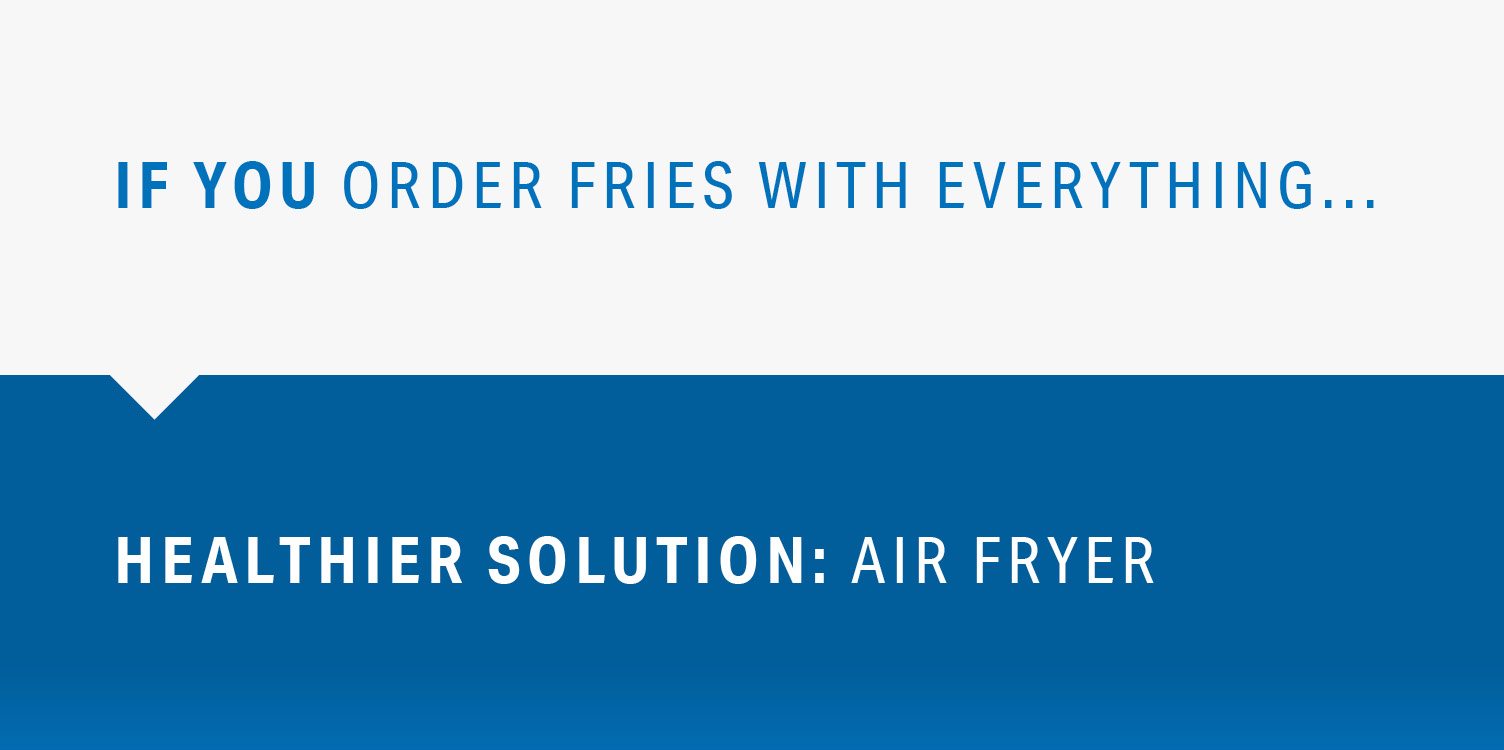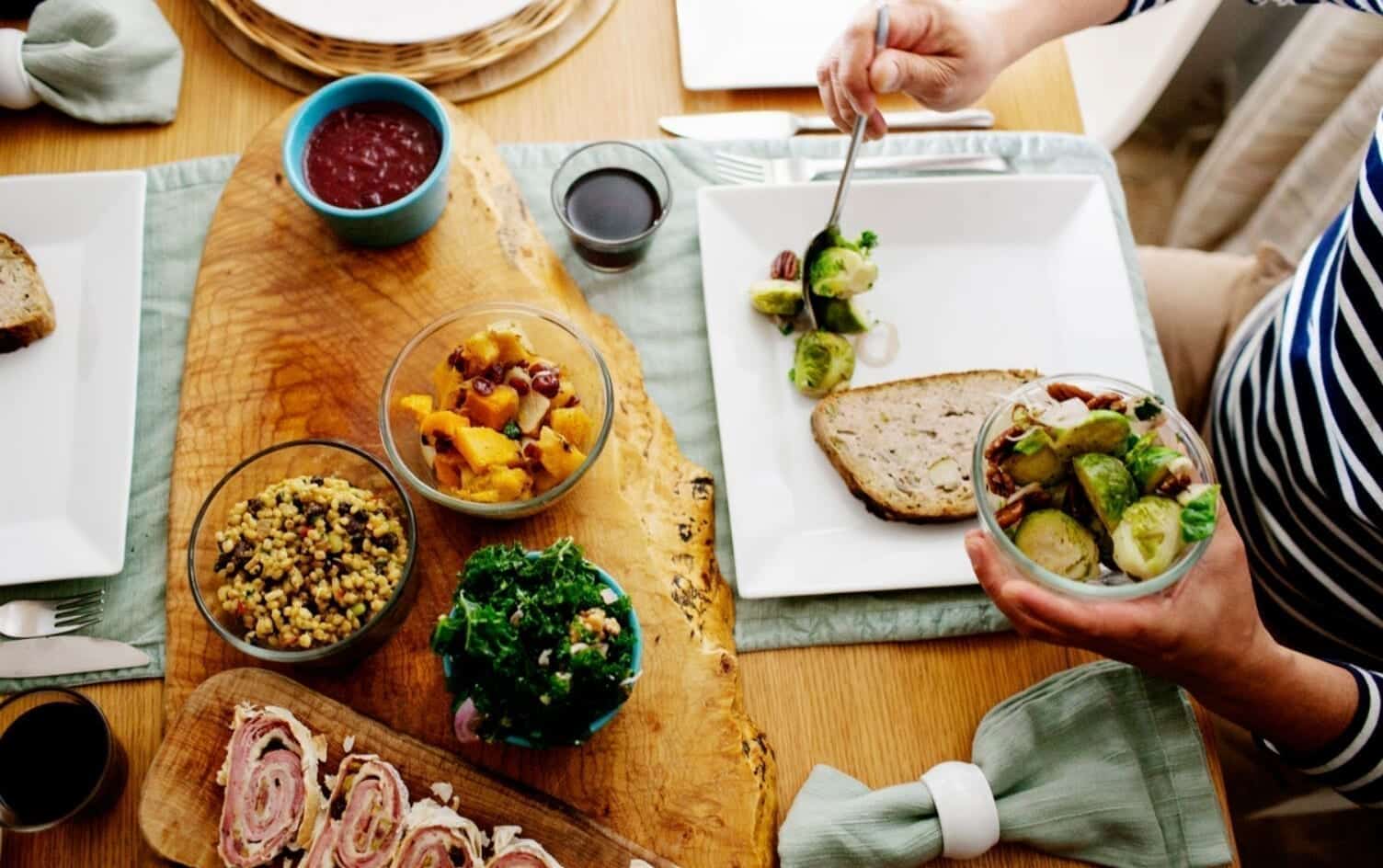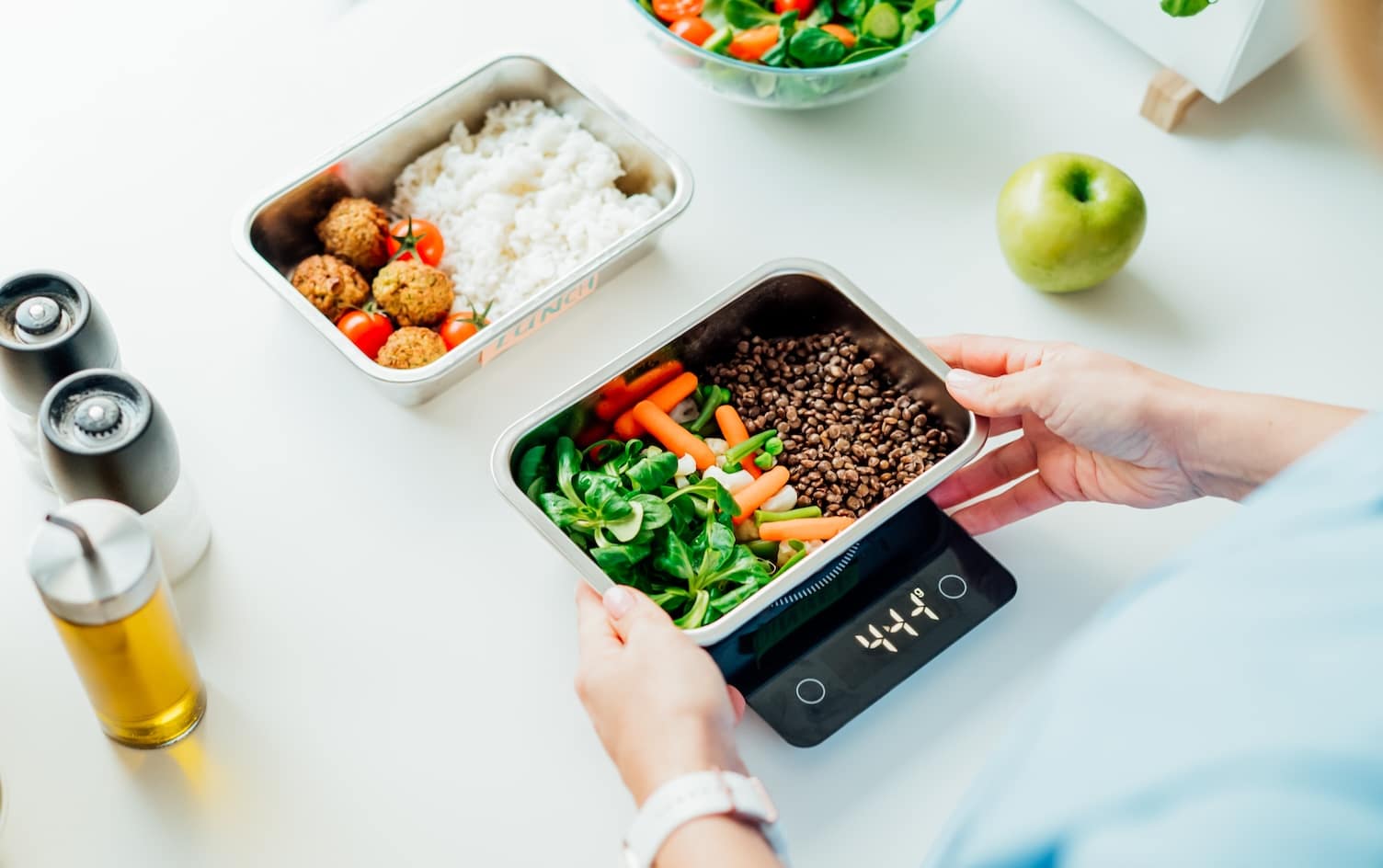One of the keys to eating right involves planning, which is where a solid meal prep routine comes in. There are all kinds of gadgets and shortcuts that make meal prep more palatable.
To get you started, our experts provide trendy, healthy techniques to consider:

“Air fryers have taken off as a healthy alternative for those of us who enjoy fried food but don’t want the calories,” says Kirsten David, RDN at EduPlated, an organization that offers personalized nutrition coaching. Air fryers circulate hot air around the food at fast speeds. This creates a crispy layer similar in texture to fried foods without using any oil.
David lists a few of the air fryer’s benefits:
- It bakes, grills and roasts. You can cook any favorite fried food item (breaded chicken, french fries, mozzarella sticks), as well as meatballs, homemade bagels and muffins.
- An air fryer takes only three minutes to preheat and often requires less cooking time than your oven.
- The fryer pan and basket can go straight into the dishwasher — no messy oil to dispose of or pans to soak and scrub clean.

The Instant Pot performs the job of seven kitchen appliances. “It can handle the tasks of a slow cooker, electric pressure cooker, rice cooker, steamer, yogurt maker, sauté/browning pan and a warming pot,” says Julie Harrington, RD, a culinary nutrition communications consultant.
The Instant Pot works by “cooking in a sealed vessel not allowing steam to escape,” says Harrington. “Because the boiling point of water increases as the pressure increases, the pressure that builds up inside the cooker allows the liquid to rise to a higher temperature before boiling.” This lets heat evenly distribute as steam surrounds food. And above all, notes Harrington, the Instant Pot keeps precious vitamins and minerals from leaching away.

The kitchen appliance with a memorable name allows users to transform vegetables into curly ribbons as a carb replacement. “Due to the increased awareness on avoiding starchy carbohydrates, spiralized zucchini has become a popular alternative to spaghetti,” says Keith Kantor, PhD, a leading nutritionist and CEO of the Nutritional Addiction Mitigation Eating and Drinking (NAMED) program.
He also says beets and carrots are popular for spiralizing. “By changing the texture of the vegetable, it can be used as a side, fancy garnish or simply [be] more appealing to the eye.” In addition, Perin Acito, RDN at EduPlated, says it’s fun for kids or picky eaters. The new look of food could help them eat their veggies.

Go back to the basics with a slow cooker, a trend brought back due to the time demands of consumers and their desire to eat healthy. “Cooking vegetables at a low heat helps make some of their valuable nutrients more digestible and, therefore, available to the body,” says Rachel Begun, MS, RDN, nutritionist and certified natural chef. For meats, she recommends cooking them low and slow as opposed to roasted or grilled because “slow heat makes the muscle more tender and, again, easier to digest.”
In addition, she says cooking meat at high temperatures can create chemicals associated with cancer. If you need your proteins grilled, Begun recommends rotating the slow cooker with grilling to help reduce exposure to such chemicals.

People imitate high-end, expensive smoothie places by doing it themselves and “putting in almond milk, chia seeds and kale,” says Shari Portnoy, MPH, RD.
READ MORE: FROM LATTES TO SOUP: THE BEST USES FOR NON-DAIRY MILK

The French technique called “en papillote” refers to steaming your food in parchment paper and, as an added bonus, allows you to throw out all the waste. David provides the six simple cooking steps:
- Create a parchment paper pouch by laying two pieces of parchment paper on top of each other.
- Fold the edges over and place your seasoned protein and vegetables of choice inside.
- Season with herbs, spices and other ingredients that infuse flavor, such as vinegar or lime juice.
- Place the parchment bag in the preheated oven.
- Bake.
- Transfer from bag to plate.




